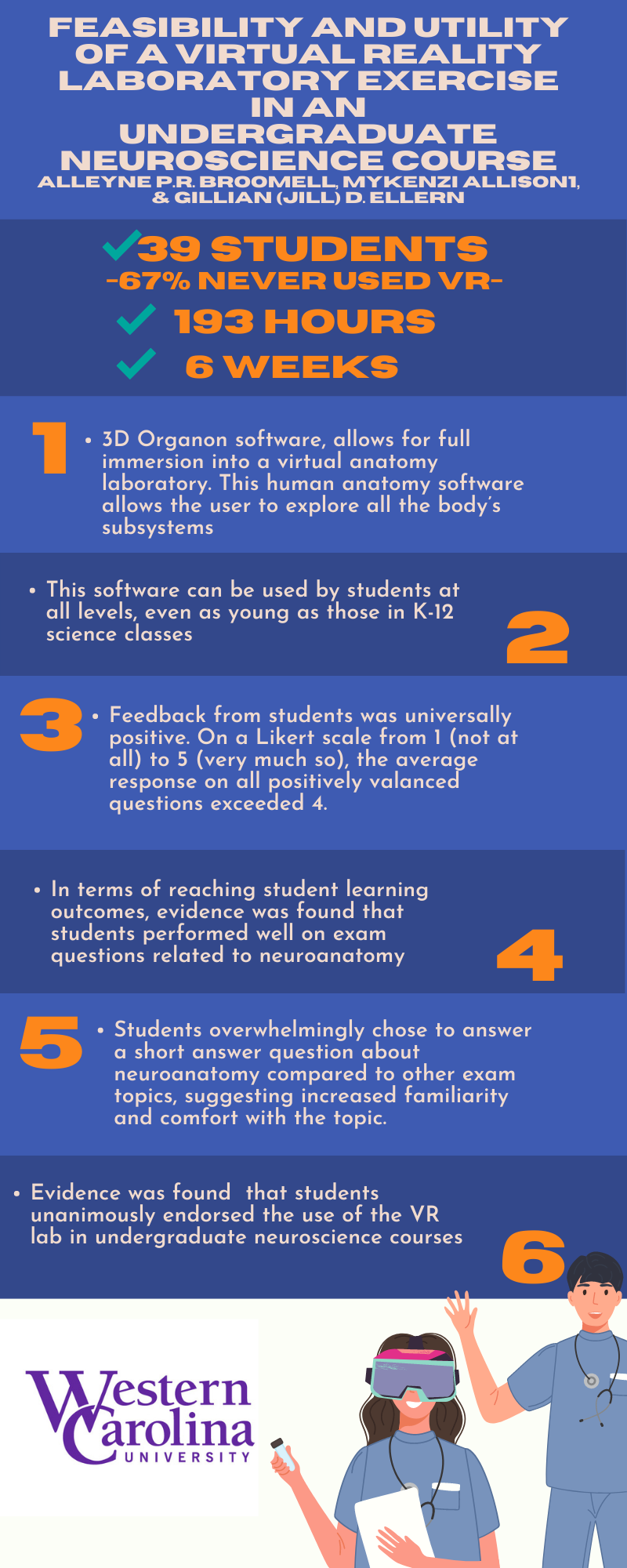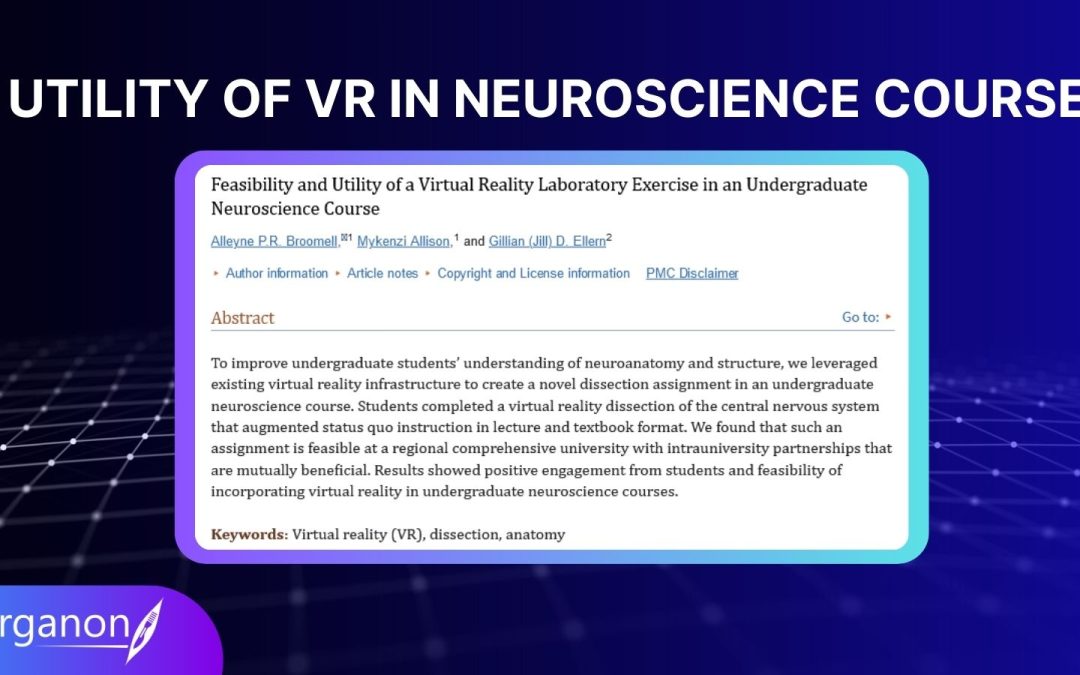Feasibility and Utility of a Virtual Reality Laboratory Exercise in an Undergraduate Neuroscience Course
At Western Carolina University’s Hunter Library, an innovative study titled “Feasibility and Utility of a Virtual Reality Laboratory Exercise in an Undergraduate Neuroscience Course” has shed light on the transformative power of using Virtual Reality (VR) in education. This research, focused on incorporating the 3D Organon tool into a neuroscience curriculum, highlights how cutting-edge technology can enhance learning, improve understanding, and garner positive student engagement.
Key Outcomes of the Study
1. Feasibility of VR Integration
The study demonstrated the practical viability of integrating VR into the classroom. All 39 students enrolled in the course successfully completed the VR sessions. Furthermore, nearly every participant submitted their related assignments on time, demonstrating that the exercise was not only engaging but also conducive to maintaining academic timelines.
Performance Excellence: Students performed exceptionally well, with an average score of 137 out of 150 points. This high level of achievement underscores the effectiveness of VR exercises in enhancing students’ comprehension of complex topics in neuroscience.
2. Enhanced Learning Outcomes
The study found that VR significantly improved students’ understanding of neuroanatomy. On neuroanatomy-specific questions, students scored an average of 85.34%, a notable improvement over their scores on unrelated material, which averaged 77.39%. This suggests that VR’s immersive, hands-on experience helps students retain critical knowledge more effectively.
Success in Short-Answer Identification: When tasked with identifying brain structures, students scored an average of 5.19 out of 7, reinforcing how this visual and interactive approach bolstered their grasp of intricate brain anatomy.
3. Positive Student Perceptions
Feedback from students was overwhelmingly positive. On a scale from 1 to 5, responses to positively framed survey questions averaged above 4, reflecting broad approval of the VR lab experience. Even students who encountered technical difficulties while navigating the software recognized its educational value, expressing enthusiasm for more frequent access to VR tools for independent study.
Student Insights: The immersive 3D nature of the VR program and the ability to visualize connections within the brain were frequently cited as major advantages. Many students emphasized that VR’s hands-on approach made the material more accessible and engaging, helping them to visualize complex structures in ways that traditional methods couldn’t match.
The Future of VR in Neuroscience Education
This study reinforces Western Carolina University’s commitment to integrating innovative technology into education, particularly in fields like neuroscience where visual learning is crucial. The findings highlight the growing role of virtual reality as a transformative tool in academic settings, offering enhanced engagement, deeper understanding, and overwhelmingly positive student feedback.
By continuing to explore and expand the use of VR in the classroom, educators can offer students more dynamic and effective learning experiences—ushering in a new era of educational possibilities.


